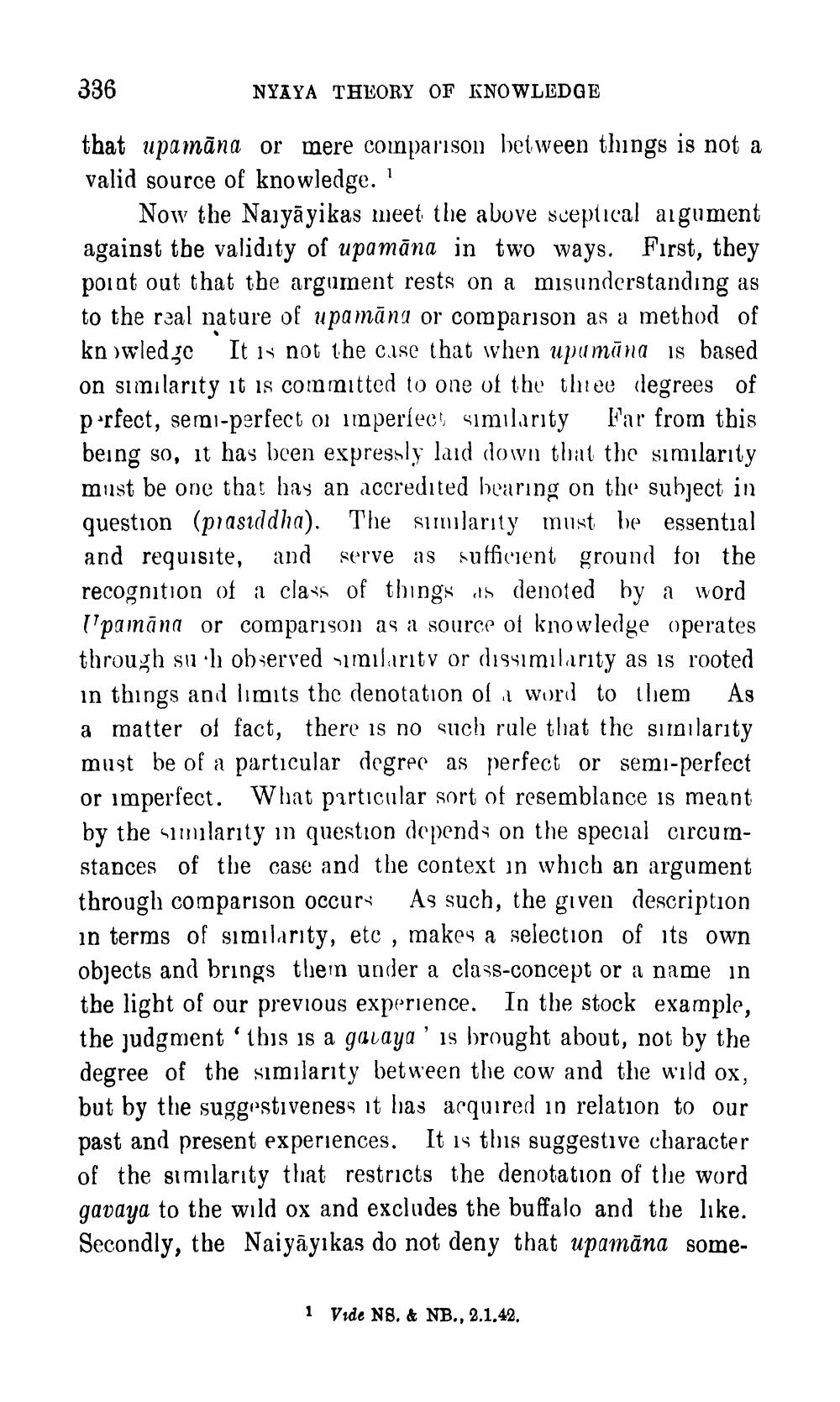________________
336
NYAYA THEORY OF KNOWLEDGE
that upamāna or mere comparison between things is not a valid source of knowledge.'
Now the Naiyāyikas meet the above sceptical argument against the validity of upamāna in two ways. First, they point out that the argument rests on a misunderstanding as to the real nature of upamāna or comparison as a method of kn )wledge It is not the case that when upumāna is based on similarity it is committed to one of the three (degrees of pörfect, semi-perfect ou imperíect similarity Far from this being so, it has been expressly laid down that the similarity must be one that has an accredited bearing on the subject in question (prasiddha). The similarity must be essential and requisite, and serve as sufficient ground for the recognition of a class of things is denoted by a word Ipamāna or comparison as a source of knowledge operates through suh observed similarity or dissimilarity as is rooted in things and limits the denotation of a word to them As a matter of fact, there is no such rule that the similarity must be of a particular degree as perfect or semi-perfect or imperfect. What particular sort of resemblance is meant by the similarity in question depends on the special circumstances of the case and the context in which an argument through comparison occurs As such, the given description in terms of similarity, etc, makes a selection of its own objects and brings them under a class-concept or a name in the light of our previous experience. In the stock example, the judgment 'this is a garaya' is brought about, not by the degree of the similarity between the cow and the wild ox, but by the suggestiveness it has acquired in relation to our past and present experiences. It is this suggestive character of the similarity that restricts the denotation of the word gavaya to the wild ox and excludes the buffalo and the like. Secondly, the Naiyāyikas do not deny that upamāna some
1 Vide N8. & NB., 2.1.42.




